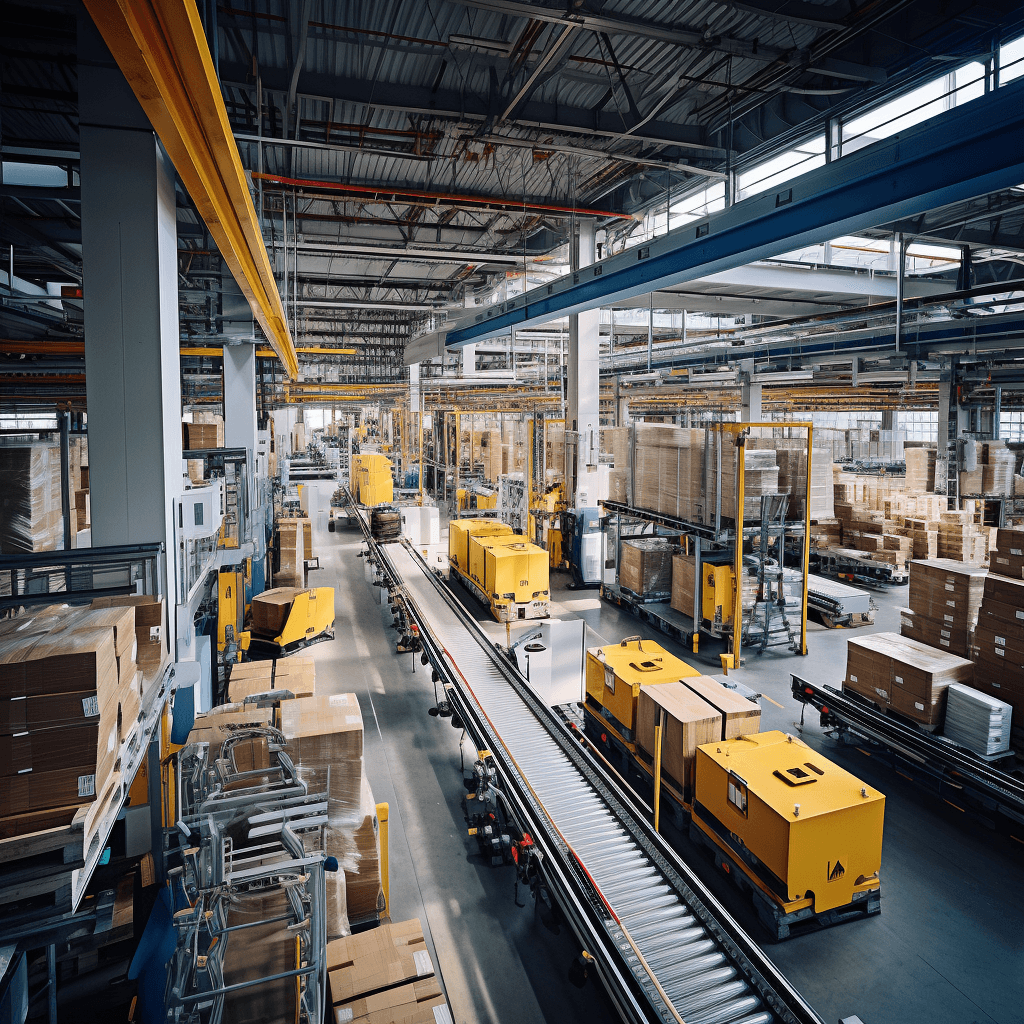Integrating Conveyor Systems with Robotics & Automation
Integrating Conveyor Systems with Robotics & Automation. Call Diamond Phoenix Automation At To Arrange Your Free Consultation.
By Diamond Phoenix
// 13 Aug 2024
In 2024 and beyond, there's a fast-paced movement towards integrating conveyor systems with robotics and automation. As customer demands constantly increase, businesses are seeking further methods to achieve new levels of efficiency and flexibility that were once unattainable.
The integration of conveyor systems with robotics and automation is revolutionising modern manufacturing as we once knew it, and you can take full advantage with the opportunity of exploring a plethora of state-of-the-art solutions.
If you require a site visit or would like to find out more about conveyor systems and robotics integration, please call us directly at 01908 592 354 or through our convenient online contact form.
Conveyor Systems in Manufacturing
Conveyor systems have been paramount in manufacturing for over a century and continue to be to this day in the UK and across Europe.
They serve as the foundation of many production lines, efficiently moving materials, products, and components from one stage of the manufacturing process to another.
Traditionally, these systems have been relatively straightforward, relying on mechanical movements to transport items along a fixed path.
Types of conveyor systems include:
- Belt conveyor systems
- Bespoke conveyor systems
- Vertical conveyor systems
- Roller conveyor systems
- Carton & tote conveyor systems
However, as manufacturing processes have become more complex and diversified, the limitations of traditional conveyor systems have become apparent in some instances.
These systems can be rigid, making it challenging to adapt to changes in production demands or to accommodate different product types.
Enter robotics and automation. This is where integration can truly take your operational efficiency to new levels.
The Emergence of Robotics & Automation
Robotics and automation have become integral components of modern manufacturing. Robots are increasingly being used to perform tasks that are repetitive, dangerous, or require a level of precision that is difficult for human workers to achieve consistently.
Automation, on the other hand, encompasses a wide range of technologies that enable machines to operate autonomously or with minimal human intervention.
Types of robotics and automation include:
- Automated guided vehicles (AGVs)
- Autonomous mobile robots (AMRs)
- Automated storage and retrieval systems (AS/RS)
- Warehouse sortation systems
The integration of robotics and automation into conveyor systems has unlocked new possibilities for manufacturing. By combining the strengths of these technologies, businesses can create highly efficient, adaptable, and scalable production lines.
Key Benefits Of Integration
Increased Efficiency and Throughput
One of the most significant benefits of integrating conveyor systems with robotics and automation is the increase in efficiency. Automated systems can operate continuously, without the need for breaks, leading to higher throughput and reduced production times.
Robots can quickly and precisely handle tasks such as picking, placing, sorting, and packing products on conveyor lines, reducing bottlenecks and ensuring a smooth flow of materials through the production process.
Enhanced Flexibility
Traditional conveyor systems are often designed for specific tasks, making it difficult to adapt to changes in production.
In contrast, robotic systems can be programmed to handle a wide variety of tasks, allowing manufacturers to switch between different products or production processes with minimal downtime.
This flexibility is especially valuable in industries where product lines frequently change or where customised products are in high demand.
Improved Quality and Precision
Robotics and automation bring a level of precision that is difficult to achieve with manual labour alone. Robots can consistently perform tasks to exact specifications, reducing the risk of errors and improving product quality.
This is particularly important in industries such as electronics, automotive, and pharmaceuticals, where even minor deviations can have significant consequences.
Real-Time Monitoring and Data Collection
The integration of robotics and automation with conveyor systems also enables real-time monitoring and data collection. Sensors and cameras can be used to monitor the status of the production line, detect any issues, and provide valuable data for optimising processes.
This data-driven approach allows manufacturers to make informed decisions, improve their operations, and respond quickly to changes in demand.
Example: AGVs and Conveyor Systems in a Distribution Centre
In a large distribution centre, the process of moving goods from receiving docks to various storage or sorting areas is critical for maintaining efficiency.
Traditionally, this might involve forklifts and manual labour, but integrating Automated Guided Vehicles (AGVs) with conveyor systems can significantly enhance the process.
The collaboration between AGVs and conveyor systems allows for faster, more efficient handling of goods within the distribution centre.
This results in reduced processing times, lower labour costs, and the ability to scale operations more effectively to meet demand.
Moreover, the system's flexibility ensures that the distribution centre can quickly adapt to changes in inventory levels.
Contact Diamond Phoenix
The integration of conveyor systems and robotics and automation is expected to continue to surge in the UK and Europe, and for good reason too. By successfully integrating various systems, such as AGVs and conveyor systems, you can achieve great flexibility, efficiency, and productivity in your operations.
For more information, please call us today at 01908 592 354 or use our convenient online contact form.







